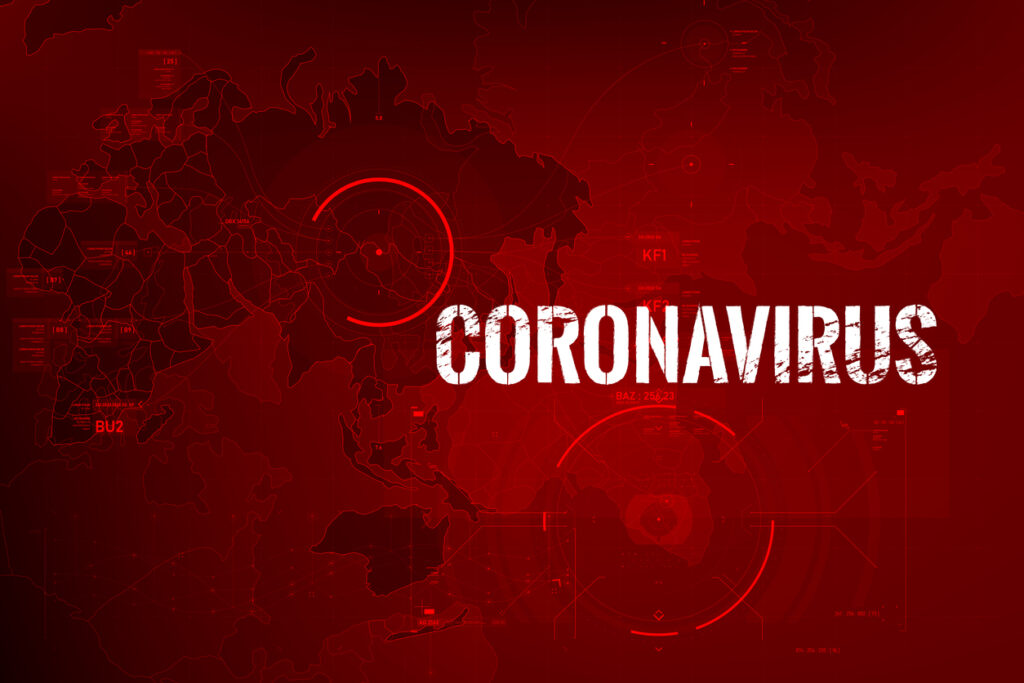It seems that every hour another country and many more people are confirmed as suffering from the highly contagious coronavirus COVID-19. With news that there’s now more than one strain of the disease, it is understandable that people are seriously worried.
Communicating with clarity and speed, and being able to ensure the effectiveness of your reach and message is paramount in a crisis.
It has spread so fast and so far that the World Health Organisation (WHO) even has a dashboard for sharing the number of cases. What’s notable is that the affected countries represent 40% of the global economy, and it’s not just those businesses that are scrambling to respond to the epidemic.
Many organisations have already made operational changes, halting all company travel, cancelling or postponing events and even isolating staff who may not have shown symptoms of the disease but who may have come into contact with carriers in certain countries.
Communication, especially via virtual methods, has never been so important.
A source of truth
Latest figures show that there’s been a huge spike in employees working remotely to limit physical interaction as much as possible.
Video conferencing software has seen a surge in users, (shares in online meeting company Zoom have shot up by 50%) and companies are focusing their attention on strengthening their remote working capabilities, providing the best technology tools they can to enable employees to work from home just as they would from a central business location.
Business leaders will command greater respect in the longer run by being upfront and addressing the problem head on.
Communicating with clarity and speed, and being able to ensure the effectiveness of your reach and message is paramount in a crisis. With so much misinformation, companies and leaders need to be reliable and credible in sharing information and answering questions. You need to be the source of truth for your employees.
Unfortunately, crisis plans are best produced in quiet times, but businesses don’t currently have that luxury. One area that companies can all excel in at the moment though is transparent communications – even when some of the news is ugly. When employees are kept in the loop, they become vital partners in managing a crisis and helping the company survive and thrive.
With social media, employees will likely be communicating about the spread of COVID-19 and what they say can have an extensive reach and impact on your business.
Employees should be viewed as an extension of your public relations team, especially in an emergency. That means whatever they’re told must be consistent and as accurate as possible.
Four steps to better crisis communications
It’s during times like these that companies need to take their internal communications seriously. HR and internal communications teams need to work together, and quickly to help guide their business through this period of turmoil.
Working with multinational brands over the years we’ve found that some of the simple things to remember and do are:
- Be strategic: don’t just jump into action without first pausing to make sure the information is as accurate as possible.
- Be consistent: update the workforce regularly to ensure they consistently have the most up-to-date information.
- Keep it simple: draft a simple message to employees that answers or addresses their most important questions. Leaders and internal communications’ top priority should be to produce factual, consistent, and practical messaging.
- Get prepared: you may be on the back foot right now but once your initial communications have been distributed, get organised and keep preparing content. You need to be fluid and effective. When businesses are prepared, they are in an excellent position to start getting information out to employees even if they don’t always have the exact answers. Employees need to trust the authority of their employers’ messaging, and not gather information from unreliable sources.
Remember that fudging the truth won’t lead to a good outcome for leaders, employees, or customers, no matter the current climate. People want the businesses they work for to be authentic and open. Our initial analysis of communications across our platform during this outbreak has found that the most popular messages are from corporate communications, the CEO and other senior members of the leadership team. Their messages are focused on reassuring employees that actions are being taken and also focus on encouraging best practices to stay healthy.
You only need to look at the reaction in the markets across the globe to know that many organisations are going to struggle through the next few months. Be mindful of other businesses’ mistakes where they have struggled or even sunk thanks to poor leadership: Enron, Merrill, Citi, Volkswagen, Theranos, to mention a few. Business leaders will command greater respect in the longer run by being upfront and addressing the problem head on.
Reach all employees everywhere
People are worried and confused, and many are starting to panic. Even supermarkets are having to ration stock to help manage supply and demand. People’s behaviour can be far from rational at such times.
If you’re not communicating with your employees, they will start to feel disconnected from the business and may not understand why decisions are being made. That in turn means that they’re less likely to engage with your messages.
If employees aren’t getting relevant information, they will go elsewhere and it’s important they get the facts from you and that you put a halt to the water-cooler conversations. Demonstrating a level of empathy with those who are frustrated or worried during this period will also pay dividends in the long run.
The British government has notably ruled that no one should miss out on sick pay due to this disease and that workers will get statutory sick pay from the first day off work (not the fourth).
Different employees consume content differently. Some employees will check email regularly, others only have access to their smartphones or tablets during work, some may prefer a phone call or a notice on the company intranet. Smaller businesses may use group messaging or video calls only.
[cm_form form_id=’cm_65a14c3f5da64′]
However you communicate, it’s clear one method of communication will not be enough. Businesses need to meet employees where they are, and this includes having a plan in place in case their primary means of communication is not available.
Finally, remember that employees need a source of truth, especially in times of crisis and misinformation. They are relying on their employers to share accurate and helpful information to keep themselves and their families safe. Don’t let rumours become fact. Keep employees in the know on how the company is preparing for COVID-19 and has a robust contingency plan in place and ready to be activated if required.
Interested in this topic? Read: Coronavirus: How should HR prepare?








One Response
This is brilliant, Nicole –
This is brilliant, Nicole – thanks for the awesome write-up.